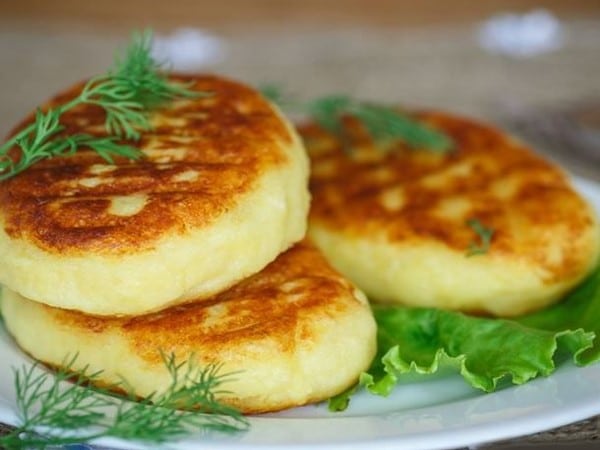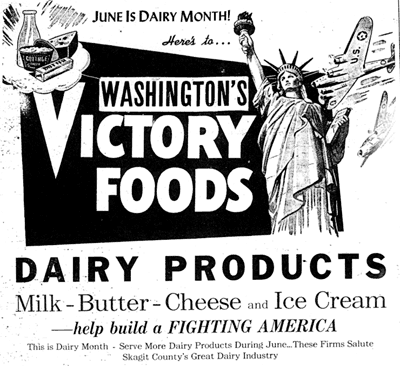In October 2014, I became a vegetarian. My family was upset, claiming I would not be able to get the requisite calories, protein, and minerals in needed. Eventually they came to grudgingly accept my decision, as I experienced no detrimental health affects. One of the things that made my conversion bearable was my continual consumption of dairy products, cheese in particular. My family has always loved cheese. Despite all our different tastes and preferences, cheese is the one food we can all agree on. My family religiously complies by the FDA’s Recommended Daily Allowances of three servings of dairy a day, and at one point my doctor prescribed I consume five servings of dairy a day. As a vegetarian enthusiastic about cooking, I am able to convince my family to eat vegetarian by incorporating large amounts of cheese into my recipes. In undergrad, I even wrote a research paper on the rise of the grilled cheese sandwich as a comfort food in the United States.
However, after my semester-long investigation of the United States dairy industry, dairy history, and cultures, I have come to realize that dairy is economically, politically, biologically, and culturally complicated.
As consumers, we carry a plethora of misconceptions about dairy. Interestingly though, compared to other foods, people take dairy personally. Dairy, what types of products and whether it is consumed at all, has become a source of identity for people around the world. In the U.S., the agrarian dream still persists and creates a pastoral image of our dairy sector where small family farms raise herds of cows on lush, green grassy pastures. However, our dairy industry is made up of fewer and lager farmer where cows never see grass or step outside.
Between 2001 and 2009, the number of milk cow operations declined by 33 percent (USDA NASS, 2010). During that same period, the number of those operations became larger and more concentrated; milk cow operations with 500 or more cows increased by 20 percent and operations with 2,000 or more cows increased by 128 percent. Meanwhile, operations with less than 500 cows decreased by 35 percent (Ibid). These larger dairies account for a larger share of total milk production; in 2009 60 percent of milk production came from farms with 500 or more cows (up from 39 percent in 2001), and 31 percent came from farms with 2,000 or more cows (up from 13 percent in 2001). However, farms with less than 500 cows decreased in their share of total milk production, from 61 percent in 2001 to 41 percent of milk production in 2009 (Ibid). Milk production has also become more concentrated and shifted west. In 2009, the top milk producing states were California, Wisconsin, and New York, and the top-ten milk producing states accounted for nearly 74 percent of the total milk production in the United States (Ibid).
How milk cows are treated and the face of who works on our dairy farms is also not what the typical consumer imagines. Today the average dairy cow produces six to seven times more milk than they did a century ago. Farmers push cows to produce more and more through constant impregnation from artificial insemination, with an average milk cow producing milk for as much as 305 days of the year. What is most troubling for me as a vegetarian is that after three to four years, when a cow’s milk production begins to slack off, they are culled from the herd for hamburger meat. In fact a large portion of our ground meat comes from culled dairy cows (Kurlansky, 2014). This puts my consumption as a vegetarian into question. While I became a vegetarian for sustainability reasons, the large, confined dairies that produce the majority of our country’s milk and milk products, while benefiting from economies of scale, are not necessarily environmentally or socially sustainable.
Additionally, the faces on dairy farms are increasingly those of immigrants. Taking Wisconsin as an example, in a survey conducted in 2008 of Wisconsin’s dairy farms, they estimated that 40 percent of all hired labor was immigrants, and as the farm size increased, the proportion of immigrant workers also increased (Harrison et al, 2009). This figure is most likely higher due to absentee temporary workers, employers under-reporting due to the presence of illegal workers, and missing data. Harrison et al point to declining incomes among dairy farmers as the primary cause for farmers resorting to immigrant labor. Between 2012 and 2016, average net returns above all costs for dairy farms in all size categories was negative (Zulauf, 2017, 1). As a result, farmers have sought to increase their incomes by either increasing the size of their herd or milking cows more times per day. Also, on family farms, tighter farm budgets have necessitated family members seek off-farm employment. The higher labor need and the decrease in the available family labor has made cheap, immigrant labor attractive (Harrison et al, 2009).
I cannot get into the human rights abuses experienced by immigrant farm workers here (which is pervasive throughout our food system). With all the issues mentioned above coming to the attention of some more-educated consumers, organic dairy has started to look like an ideal alternative. The number of organic dairy farms increased on average 25 percent annual between 2000 and 2005 (McBride & Greene, 2009, iii), and in 2016, U.S. organic dairy sales amounted to $6 billion (Whoriskey, 2017). In general, organic farms tend to be, on average, smaller than conventional farms, concentrated in the northeast, have higher costs per a cow and less milk production per cow, received higher prices per cwt, and are more likely to pasture their cows (McBride & Greene, 2009, iv). That being said, organic dairies are increasingly looking like conventional dairies. Farms are getting bigger, especially in the west and southwest, and cows stay in confinement for longer periods of time. The organic liquid milk market in the U.S. is also in the hands of only a few companies. While these companies still pay organic farmers higher premiums for their milk than conventional farmers, they have started to centralize their processing and switch to sourcing milk from large, conventional-looking organic dairy farms in Texas, New Mexico, and California (Whoriskey, 2017). Thus, even organic dairy is not what consumers think it is.
Aside from all the issues in the dairy industry, biologically should we even be consuming dairy? Genetically, for the most of the world population, the science says no. Lactose is a double molecule made of two smaller sugar molecules, glucose and galactose. In order for these sugar molecules to be absorbed by the small intestines, the chemical bond holding them together must be broken. In order to break that bond, the body requires an enzyme called lactase, a protein that catalyzes chemical reactions. Like all enzymes, there is a stretch of DNA that, when signaled, produces lactase. All our bodies produce lactase as babies, but after we stop consuming breast milk our bodies stop producing the enzyme and, thus, lose the ability to digest lactose (i.e. lactose intolerance). Lactose intolerance is the rule not the exception, yet we incorrectly perceive it as the minority, with high rates of intolerance everywhere in the world with only a few small pockets of exception (Scheindlin, 2007).
Our ability to digest lactose is so new, in evolutionary terms, and so much in the minority, and yet it is promoted fervently as essential for proper human nutrition by Western medicine and government agricultural departments. The dietary advice promoted by these institutions helps indoctrinate a culture whereby dairy consumption is part of our society’s identity and makes up the fabric of our being. We are what we eat after all. And dairy is everywhere: the national RDA’s recommend three servings of dairy a day, encapsulated in a glass of milk on MyPlate; the industrial food industry exudes dairy, from fast food and processed food products to the strategic place of milk in grocery stores; and who can forget the USDA dairy checkoff “Got Milk?” ads, with Olympic athletes sporting prominent milk mustaches? More consumers are challenging this culture though. Veganism is on the rise, and nondairy milk alternatives are challenging the liquid milk market, inciting panic in the dairy industry where profits are already nonexistent. Consumers are realizing, for one reason or another, that the claim that dairy is necessary for a healthy diet is not entirely true. The essential vitamins, minerals, and amino acids can be found in other sources in large enough quantities, such as calcium in dark, leafy greens.
I do not plan on ceasing my consumption of dairy, and this is by no means supposed to be an attack on dairy. In fact, my dairy consumption, which had fallen when beginning grad school, may have increased during this semester’s investigation. However, this study has made me take a more critical look at the amount, source, and types of dairy products I consume as well as made me more critical and reflective of the tradeoffs involved in the production of the foods I consume.
Harrison, J., Lloyd, S., O’Kane, T. (2009, Feb). Overview of Immigrat Workers on Wisconsin Dairy Farms. Changing Hands: Hired Labor on Wisconsin Dairy Farms. Briefing No. 1.
Kurlansky, M. (2014, Mar 17). Inside the milk machine: How modern dairy works. Modern Farmer. Retrieved from https://modernfarmer.com/2014/03/real-talk-milk/.
McBride, W. D. & Greene, C. (2009 Nov). Characteristics, Costs, and Issues for Organic Dairy Farming.USDA Economic Research Service. Economic Research Report No. 82.
USDA NASS. (2010, Sept). Overview of the United States Dairy Industry. United Stated Department of Agriculture National Agriculture Statistic Service.
Scheindlin, B. (2007, Spet). Lactose intolerance and evolution: No use crying over undigested milk. Gastronomica.
Whoriskey, P. (2017, May 1). Why your ‘organic’ milk may not be organic. Washington Post. Retrieved from https://www.washingtonpost.com/business/economy/why-your-organic-milk-may-not-be-organic/2017/05/01/708ce5bc-ed76-11e6-9662-6eedf1627882_story.html?utm_term=.252cb8924007.
Zulauf, C. (2017, May 25). Economies of size in producing milk and U.S. dairy policy: A key relationship. Farmdoc Daily(7): 1-4.



















